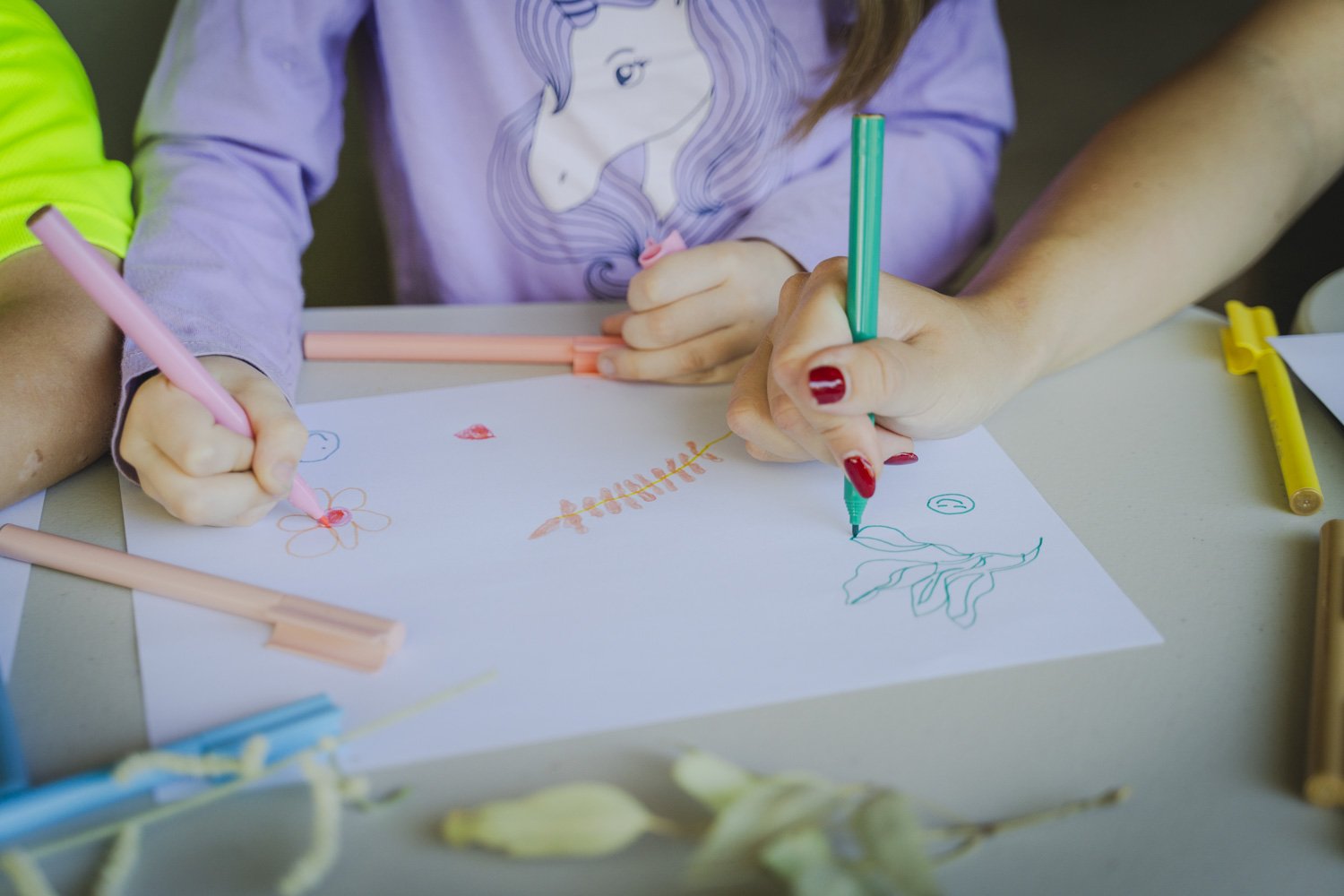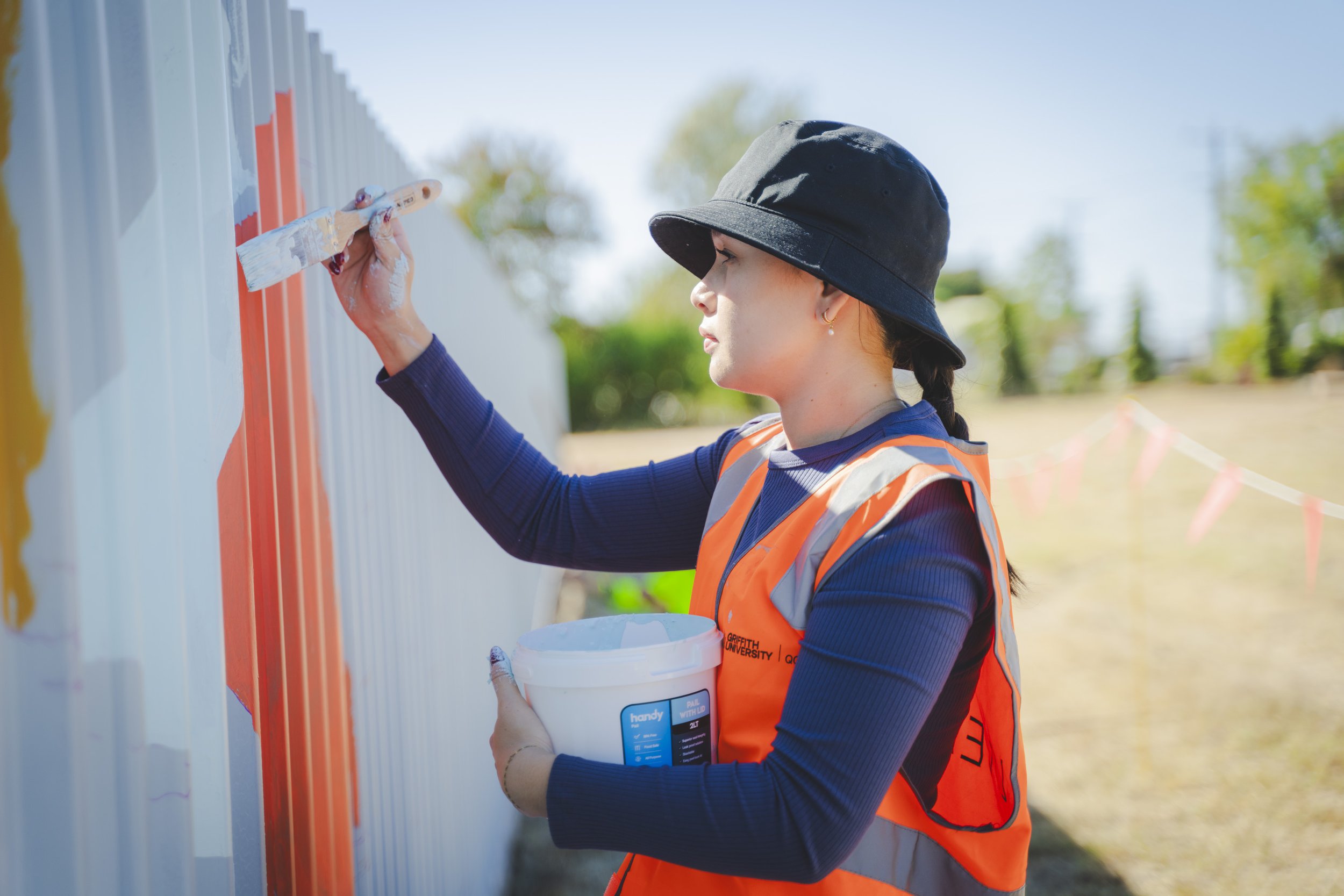Hughenden Town Mural
I was given the amazing opportunity to work alongside Griffith University’s LiveArt program where we are able to travel to rural communities throughout Australia, transforming the towns with pieces of art that reflects the town and what makes them special. I was fortunate enough to work alongside Dr Simon Degroot, where he had designed a pieced based off the Flinders Poppy, a flower that only blooms within the Flinders Shire - a region where Hughenden was situated (4 hours inland of Townsville, North Queensland).
We took this experience to gather inspiration, skills and knowledge on how to create a mural and a captivating piece of art that speaks to the town and its residences. I helped the installation process of the mural while also gaining experience on mural installations, how to work with the client, how to build connections and how to be inspired by the environment you’re in. Hughenden is a town of many murals, so we were able to explore the artwork that resides in the area, the beautiful landscapes and colours that comes with their infamous outback sky sunset.
After the installation of the mural, I was able to work closely with the community as well as Dr Simon Degroot to produce a commissioned piece that would be installed as a vinyl sticker on my own. Taking inspiration from the rich history Hughenden presents. With this design still in the approval and review process.
Photography by: Mai Naito @mainaito.art
-
Queensland College of Art & Design students have recently worked with Flinders Shire Council to create a new mural as part of the Festival of Outback Skies. Palette of Skies: Artistic Fusion is a new initiative contributing to the outback festival which celebrates the culture and lifestyle of regional communities like Hughenden.
The festival provides an ideal platform for creative expression where students can showcase their artistic talents and draw inspiration from the unique landscapes and experiences that the Outback offers. This artwork highlights the beauty of the Outback with elements and colours of the landscape to celebrate wide-open spaces.
Pimelea decora Flinders Poppy is a species endemic to North Queensland in the area between Hughenden, Winton and Julia Creek. It is a woody perennial herb with densely hairy, red and cream-coloured flowers which bloom throughout the year.
These wildflowers capture the essence of the outback and are a unique feature in the Hughenden region. This plant is beautiful and tenacious and thrives in difficult conditions.
The flowers reflect the colours of the outback, reds and yellows catch the rays of the rising sun and the dusty green foliage bends and grows toward the sky. These colours and forms from the landscape are an inspiration for the festival theme ‘Endless Horizons’. This small flower is transformed into a design element and painted large to emphasise the beauty and vibrancy of Hughenden.
-
“This trip taught me so much, from finding inspiration in the community and environment around me to learning how to paint with a square brush on a difficult surface. Combining my skills as both artist and designer through large-scale artworks is something I will definitely pursue in the future.”
-
The mural is situated on the Discovery Centre building, adjacent to the main road - a part of the town that experiences heavy traffic. In hopes that those who visit the town are able to experience the mural as they travel by.
The piece was created from acrylic paint, with the installation time taking approximately 5 days with 4 artists.
-
Hughenden is a small town located in northwestern Queensland, Australia. Here's a brief overview of its history and key details:
1. Location: Hughenden is situated in the Flinders Shire, approximately 380 kilometers west of Townsville and 1,400 kilometers northwest of Brisbane.
2. Early history: The area was originally inhabited by Aboriginal peoples, particularly the Yirandali people, for thousands of years before European settlement.
3. European settlement: The town was established in the 1860s as European settlers moved into the region for pastoral activities, primarily sheep and cattle grazing.
4. Name origin: Hughenden was named after the manor house of British politician Lord Palmerston, located in Buckinghamshire, England.
5. Railway development: The town's growth was boosted by the arrival of the Great Northern Railway in 1887, which connected it to the coast and facilitated the transportation of goods and livestock.
6. Dinosaur fossils: Hughenden gained recognition in the paleontological community due to significant dinosaur fossil discoveries in the surrounding area. The region is part of Australia's Dinosaur Trail.
7. Economy: Historically, the town's economy has been based on the pastoral industry, particularly sheep and cattle farming. In recent years, tourism has become increasingly important, especially related to dinosaur discoveries and outback experiences.
8. Flinders Discovery Centre: This museum in Hughenden showcases the area's natural history, including a replica skeleton of a Muttaburrasaurus, a dinosaur species discovered in the region.
9. Population: As of the 2016 census, Hughenden had a population of approximately 1,100 people, reflecting the challenges faced by many small rural towns in Australia.
10. Climate: The town experiences a semi-arid climate with hot summers and mild winters, typical of inland Queensland.
Hughenden's history reflects the broader narrative of European settlement in inland Australia, the importance of the pastoral industry, and the more recent diversification into areas such as paleontology-based tourism. The town continues to serve as an important center for the surrounding rural areas while adapting to changing economic conditions.












Click the button to view Queensland College of Art and Design’s (QCAD) site about the installation and the Hughenden article about our work.
My commissioned piece (still in revision and approval phase)
For now the artwork is superimposed onto where it will be installed while in the revision and approval phase.
Due to the Hughenden’s council’s commitments, the approval will come later this year.
View my initial proposal pitch
-
The design will be situated on the Hughenden library (the top portion) which is located on the main road travellers take to get from one side of the town to the other. This spot gets a lot of sun light, with the community expressing that this area tends to fade quickly (which is why the previous design was removed). I wanted to create a piece that doesn't have too much contrast and one that presents 'earthy tones' - like the mural we had installed recently so the quality can last and so the design will fade evenly overtime.
-
This mural was heavily inspired by my own experience in Hughenden, collecting photos of the Flinders Shire landscapes, the nature, the unique signage, and the history where I was able to pull inspiration for the colours, and formations.
-
The design is cohesive with the pre-existing designs in that area, with the current artworks in place featuring simple organic shapes, which is seen along the library and stretches up along the street across the discovery centre. So, I wanted the piece to feel somewhat cohesive to its environment and the designs around it, so it didn't feel out of place to its environment.
The colours and formations were pulled from the exposed sedimentary rock seen at the Porcupine Gorge, with its layers of colour and organic shapes. The rock presenting history dating back millions of years, witnessing the rescue expedition of Burke and Willis. This links to the well-known blazed Coolabah tree (adjacent to the flinders river) where people began to see the fertility and wealth of the land which ultimately led to the creation of the town Hughenden.
With the Coolabah tree intertwining with the land as it serves as memorial for the town to reflect on. I also based the leaves off the images we took of the tree itself, not focusing on a uniform pattern but looking at the soft and unique shapes of each individual leaf. With each side the tree branches reaching to connect together in the centre which symbolises the connect between the town, ourselves and the rich history Hughenden presents.
Hughenden to me feels like a very old-style rural town, with this typography brining in feelings of nostalgia and allowing the community to reflect on their past. Despite the town still displaying some old signage, Hughenden is slowly developing and replacing the old with the new - in hopes this design will connect the community with their past or to engage with those who pass by and to lead them to the library where they can continue to learn more about the town.
-
The artwork will be created as a digital vectorised piece that will be turned Into a vinyl sticker which will be placed onto of the library.
The library was originally proposed to have the mural painted on, due to the height and powerlines, it posed a risk to our safety.
Because of this I was approached to make a design that was durable and easily applicable.



